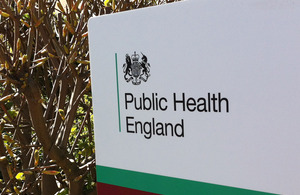Reduce the risk of carbon monoxide poisoning over winter
PHE advises people to get their fossil fuel and wood burning appliances checked by an appropriately registered engineer before winter sets in.

With the start of Carbon Monoxide Awareness Week, Public Health England (PHE) is advising people to have their fossil fuel and wood burning appliances, like boilers, heaters and cookers, checked by an appropriately registered engineer before winter sets in.
There are about 30 accidental deaths a year from carbon monoxide (CO) poisoning in England and Wales. It is difficult to detect because you can’t see, smell or taste it.
Dr Sotiris Vardoulakis, Head of Environmental Change at PHE’s Centre for Radiation, Chemical and Environmental Hazards (CRCE) said:
Many of these deaths take place between November and February due to faulty fossil fuel and wood burning appliances leaking this lethal gas.
To lower the risk, we recommend that people should ensure that their fossil fuel and wood burning appliances are regularly checked by an appropriately registered engineer. In addition, people should fit an audible CO alarm which meets European Standards EN 50291 in each room containing an appliance and ensure rooms are adequately ventilated.
PHE recommends that people have these appliances and their flues checked before the start of winter, which is when most of the accidental deaths occur.
The installation of an alarm, which can be bought from most DIY retailers and supermarkets, should not replace regular servicing of all fossil fuel and wood burning appliances by a registered engineer.
It is estimated that around 4,000 people attend accident and emergency departments in England each year because of carbon monoxide poisoning. Although most of the 4,000 people would not be sick enough to be admitted to hospital, it is known that long-term exposure is associated with neurological effects - such as having difficulties in concentrating.
Dr Vardoulakis said:
Although carbon monoxide is difficult to detect, there are sometimes indicators that may suggest a fault with domestic appliances or flues. The signs of trouble are black sooty marks on the radiants – the clay bars above the gas flames – of gas fires, or sooty marks on the wall around stoves, boilers or fires, and smoke accumulating in rooms due to faulty flues.
In addition, yellow instead of blue flames from gas appliances is another sign that there may be a fault with the appliance - although this does not apply to ‘fuel-effect’, ‘living-flame’ or ‘decorative-flame’ gas fires as they are designed to look like flames from solid fuel appliances.
If you see any of these signs, turn off your appliances, open your windows and have an appropriately registered engineer check the appliance as soon as possible.
At high levels, CO poisoning can cause sudden collapse, loss of consciousness and death. Other symptoms of CO poisoning include headaches, drowsiness, dizziness, chest pains, nausea and vomiting.
If you are suffering any symptoms of CO poisoning, you should go outside and call NHS 111 for advice.
Background information
Following action to highlight the risks from carbon monoxide poisoning by Government, PHE, industry, campaign groups and others, the number of accidental CO deaths in England and Wales has fallen from about 40 per year (2005 to 2009) to about 30 per year (2010 to 2014).
For interviews or more information please contact the PHE press office:
Carbon monoxide advice is included in the Cold Weather Plan for England published by PHE.
The NHS Stay Well this Winter campaign gives further advice on how to avoid common winter illness.
See PHE’s website for more information on carbon monoxide.
NHS Choices features a video about carbon monoxide.
Carbon monoxide poisoning reduces the oxygen-carrying capacity of blood and so starves vital organs of oxygen. As more carbon monoxide is breathed in, less oxygen can be carried in the blood and symptoms worsen. Reversal of symptoms experienced by those mildly poisoned occurs on breathing non-contaminated air or through the provision of 100% oxygen.
External links:
- National Gas Emergency Service: call 0800 111 999
- Gas Safe Register
- Oil Firing Technical Association (OFTEC) helpline: call 0845 65 85 080 or visit their website
- Solid Fuel Association (SFA) helpline: call 0845 601 4406 or visit their website
- HETAS (for registered solid fuel engineer): call 01684 278170
- Read the Cross Government Group on Gas Safety and Carbon Monoxide (CO) Awareness annual report.
Public Health England exists to protect and improve the nation’s health and wellbeing, and reduce health inequalities. It does this through world-class science, knowledge and intelligence, advocacy, partnerships and the delivery of specialist public health services. PHE is an operationally autonomous executive agency of the Department of Health. Follow us on Twitter: @PHE_uk and Facebook: www.facebook.com/PublicHealthEngland.